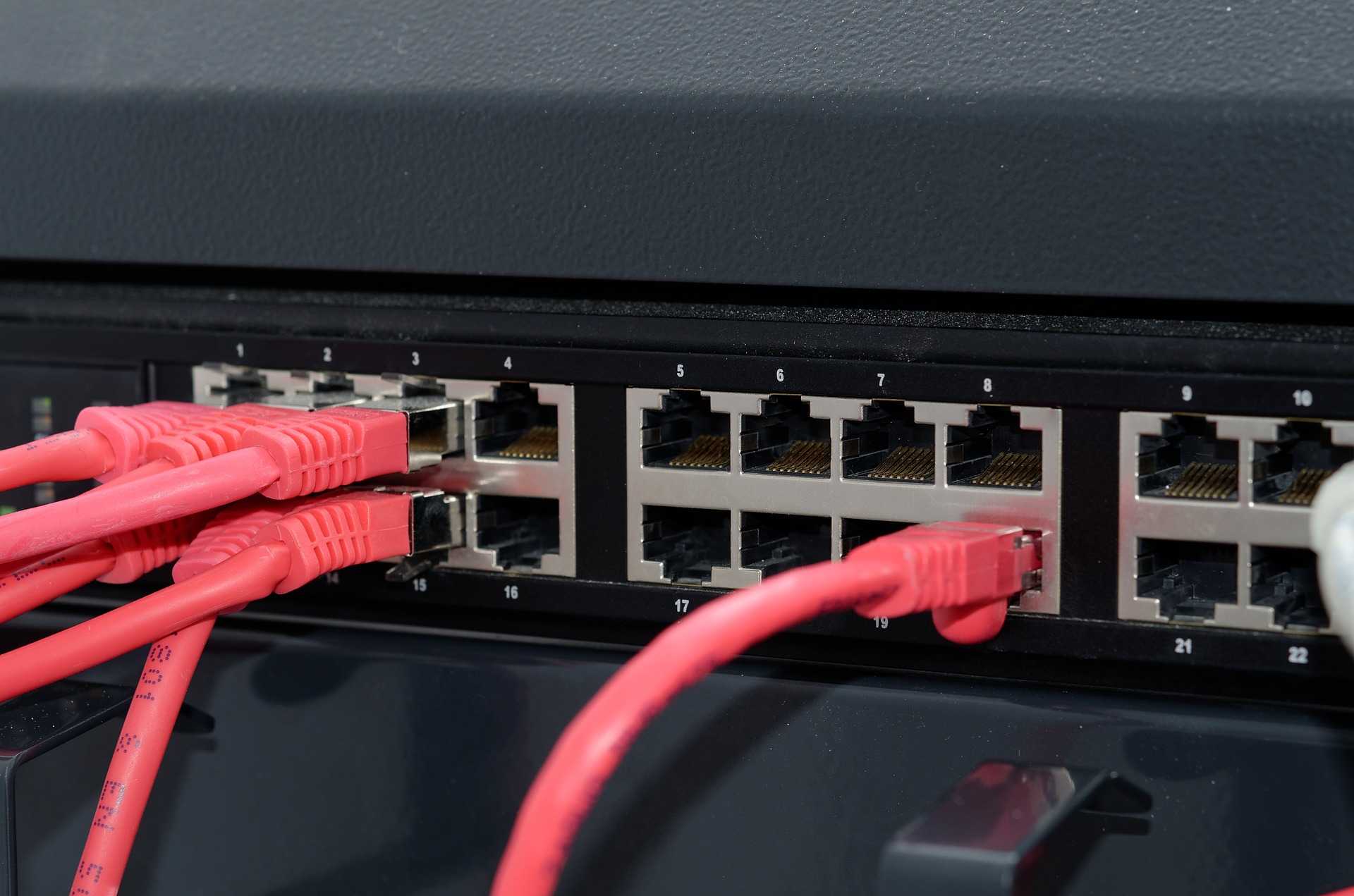
Configuring Apache as a Reverse Proxy on Mac
Sometimes it may be useful to use your own local certificate for certain testing, or you may want to present multiple sites as own domain to deal with cross origin resource sharing. These are some of the problems that can be solved with a reverse proxy. This explanation takes the perspective of a Mac user running the default Apache web server (instructions for basic setup). There will be three sections: Virtual Hosts, TLS, and Reverse Proxy.
Virtual Hosts
Virtual hosts, or vhosts, need to be enabled within the httpd.conf and then added to httpd-vhosts.conf. You will need to start editing /private/etc/apache2/httpd.conf as root, e.g. sudo vi /private/etc/apache2/httpd.conf, so that you can uncomment (remove the # at the start of the line) or add the following:
LoadModule log_config_module libexec/apache2/mod_log_config.so
LoadModule vhost_alias_module libexec/apache2/mod_vhost_alias.so
Include /private/etc/apache2/extra/httpd-vhosts.conf
Now that the web server knows about /private/etc/apache2/extra/httpd-vhosts.conf you can add your own virtual host to the bottom of the file (though you probably want to remove the example entries as the DocumentRoot probably doesn’t exist):
<VirtualHost *:80>
ServerName local.example.com
</VirtualHost>
Here I am leaving everything but the ServerName at the defaults. Go ahead and run sudo apachectl restart to pick up the new vhost and then you test it out by having curl resolve to that host name to your localhost:
curl http://local.example.com --resolve local.example.com:80:127.0.0.1
In order to allow your web browsers to know how to use this domain name, and to avoid having to manually tell curl what to do each time, you can add the following to the /private/etc/hosts file (edit it as root):
127.0.0.1 local.example.com
Now you should be able to go to http://local.example.com in your web browser.
TLS
In order to let your browser feel nice and cozy by having a TLS certificate, the first thing you need to do is create one. So let’s give it a home:
sudo mkdir -p /private/etc/apache2/tls
cd /private/etc/apache2/tls
For generating the actual certs, I used cfssl. To install it, you will need Go, at which point you can run:
go get -u github.com/cloudflare/cfssl/cmd/cfssl
go get -u github.com/cloudflare/cfssl/cmd/cfssljson
With cfssl installed, now let’s create our root certificate authority:
cat <<EOF | cfssl genkey -initca - | sudo cfssljson -bare ca
{
"CN": "localhost Root CA",
"hosts": [],
"key": { "algo": "rsa", "size": 4096},
"names": [
{
"C": "US",
"ST": "Michigan",
"L": "Lansing",
"O": "Digestible DevOps",
"OU": "localhost"
}
]
}
EOF
You should now see ca-key.pem and ca.pem in the /private/etc/apache2/tls folder. If you are curious you see the details of the resulting public key with the following:
openssl x509 -in ca.pem -text -noout
You can add trust to this cert to your Keychain Access certificates, or follow whatever method is needed to install the cert for your preferred browser in order to make things smoother when browsing you the domain you set up. For Keychain Access:
sudo security add-trusted-cert -d -r trustRoot -k /Library/Keychains/System.keychain /etc/apache2/tls/ca.pem
Now you need a server cert, signed by the root CA, and valid for 397 days (9528 hours):
cat > /tmp/ca-config.json <<EOF
{
"signing": {
"profiles": {
"server": {
"usages": ["signing", "key encipherment", "server auth", "client auth"],
"expiry": "9528h"
}
}
}
}
EOF
# Add any additional domain names here
HOSTNAME_LIST='"localhost", "*.example.com"'
SERVER_CSR="$(cat <<EOF | sudo cfssl gencert -ca=ca.pem -ca-key=ca-key.pem -config=/tmp/ca-config.json -profile=server -
{
"CN": "localhost",
"hosts": [ ${HOSTNAME_LIST} ],
"key": { "algo": "rsa", "size": 2048 },
"names": [
{
"C": "US",
"ST": "Michigan",
"L": "Lansing",
"O": "Digestible DevOps",
"OU": "localhost"
}
]
}
EOF
)"
echo "${SERVER_CSR}" | sudo cfssljson -bare server
Now you have server-key.pem and server.pem, which will be used directly by Apache, once we configure Apache to do so. Now the file /private/etc/apache2/httpd.conf needs to be modified to enable TLS. Once again you need to edit the file as root, making sure that the following line are present and uncommented (no # at the start of the line):
LoadModule socache_shmcb_module libexec/apache2/mod_socache_shmcb.so
LoadModule ssl_module libexec/apache2/mod_ssl.so
Include /private/etc/apache2/extra/httpd-ssl.conf
Now we need to modify the file /private/etc/apache2/extra/httpd-ssl.conf, also as root, to set up the paths to the cert files so that you end up with the following lines:
Listen 443
SSLCertificateFile "/private/etc/apache2/tls/server.pem"
SSLCertificateKeyFile "/private/etc/apache2/tls/server-key.pem"
Test that the configuration is at least syntactically correct:
sudo apachectl configtest
If you see Syntax OK at the end of that, you are good, so go ahead and restart Apache
sudo apachectl restart
With the generic Apache config on Mac, you should be able to go to https://localhost/ (or the domain we set up earlier: https://local.example.com/) and see the “It Works!” banner. If not, e.g. you see “connection refused” or something like that, look at the error logs as you load the page:
sudo tail -f -n20 /var/log/apache2/error_log
Reverse Proxy
The last step here is setting up the reverse proxy. Sometimes this is referred to as just a proxy, but there are differences between a proxy and a reverse proxy. A network proxy is something you knowingly connect use in order to connect to something else, for example a corporate network may use a Squid proxy to only allow certain internet traffic, so you configure your system to use that server as a proxy so that you ask it to, for example, handle a request to github.com, whereas with a reverse proxy, you go to the site that you want, but that “edge” web server then decides to actually send your request to another web server. If you had several Node services running on various ports on a single server, you could set up a reverse proxy to send requests to specific services based on the URI path, etc., but the end user would see it all as one logical service.
To enable the reverse proxy capabilities in the Apache web server, we will again need to edit the /private/etc/apache2/httpd.conf file as root, this time uncommenting or adding the following:
LoadModule xml2enc_module libexec/apache2/mod_xml2enc.so
LoadModule proxy_html_module libexec/apache2/mod_proxy_html.so
LoadModule proxy_module libexec/apache2/mod_proxy.so
LoadModule proxy_connect_module libexec/apache2/mod_proxy_connect.so
LoadModule proxy_http_module libexec/apache2/mod_proxy_http.so
Include /private/etc/apache2/extra/proxy-html.conf
Now we will configure the actual revers proxy, but rather than mess with the proxy-html.conf file, we’ll modify httpd-vhosts.conf, by editing (as root) /private/etc/apache2/extra/httpd-vhosts.conf to change our previous:
<VirtualHost *:443>
ServerName local.example.com
SSLEngine On
SSLCertificateFile /private/etc/apache2/tls/server.pem
SSLCertificateKeyFile /private/etc/apache2/tls/server-key.pem
SSLProxyEngine On
ProxyRequests Off
ProxyVia Off
<Proxy *>
Require all granted
</Proxy>
ProxyPass "/example" "http://www.example.com/"
ProxyPassReverse "/example" "http://www.example.com/"
ProxyPass "/domains/reserved" "https://www.iana.org/domains/reserved"
ProxyPassReverse "/domains/reserved" "https://www.iana.org/domains/reserved"
</VirtualHost>
Now we restart the web server once again:
sudo apachectl restart
This change will cause the / path to behave the same as before, but now the /example and /domains/reserved paths will use the reverse proxy.
However… we see that the iana reverse proxy has some missing resources, because it assumes some absolute paths. This will not be uncommon. To figure out the paths that are needed, you can go to your local site in a browser and open the developer console and look at the errors. In this case, the following reverse proxies would need to be set up (just add them into the same VirtualHost element):
ProxyPass "/_css" "https://www.iana.org/_css"
ProxyPassReverse "/_css" "https://www.iana.org/_css"
ProxyPass "/_js" "https://www.iana.org/_js"
ProxyPassReverse "/_js" "https://www.iana.org/_js"
ProxyPass "/_img" "https://www.iana.org/_img"
ProxyPassReverse "/_img" "https://www.iana.org/_img"
Even though you can muscle your way through resolving conflicts like this, it will probably be easier by just mapping the reverse proxy from root, to root, when setting up a reverse proxy to what would have been an external site. Perhaps a better example of a setup that would use multiple reverse proxies would be the previously described scenario of having several microservices, each running on a different port, which could be represented by something like this:
<VirtualHost *:443>
ServerName local.example.com
SSLEngine On
SSLCertificateFile /private/etc/apache2/tls/server.pem
SSLCertificateKeyFile /private/etc/apache2/tls/server-key.pem
SSLProxyEngine On
SSLProxyVerify None
SSLProxyCheckPeerCN Off
SSLProxyCheckPeerName Off
ProxyRequests Off
ProxyVia Off
<Proxy *>
Require all granted
</Proxy>
ProxyPass "/" "http://localhost:8080/"
ProxyPassReverse "/" "http://localhost:8080/"
ProxyPass "/auth" "http://localhost:8081"
ProxyPassReverse "/auth" "http://localhost:8081"
ProxyPass "/api" "http://localhost:8082"
ProxyPassReverse "/api" "http://localhost:8082"
ProxyPass "/cache" "http://localhost:8083"
ProxyPassReverse "/cache" "http://localhost:8083"
</VirtualHost>
Conclusion
This is a strategy that I have found many, many uses for. Hopefully you have found something useful here as well.

